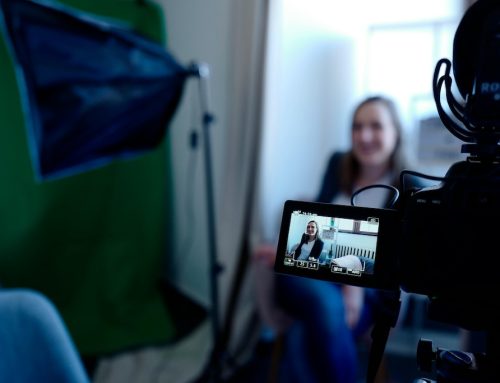There’s no shortage of takes on this one. Artificial intelligence (AI) is coming for everything, they say—including your search engine optimization (SEO) strategy.
Maybe you’ve heard it from a vendor pushing their new tool. Maybe from a blog post that feels like it was written by AI tools. But if you run a business in Canada—or you manage marketing for one—you’ve probably wondered: is it time to drop traditional SEO for something smarter and faster?
At BlueHat Marketing, we’ve been in this game long enough to see SEO evolve through just about every major phase—and if there’s one thing we know for sure, it’s this: chasing shiny tools without strategy is a fast way to burn through time and budget. But ignoring them? That’s how you fall behind.
Traditional SEO vs. AI SEO: Let’s Talk Definitions (and What They Miss)
On paper, the distinction is straightforward. Traditional SEO is hands-on. It involves researching what your audience is looking for, building a content optimization strategy around that keyword research, fixing technical site issues, optimizing your structure—basically doing the work to help both humans and search engines understand your value.
AI-driven SEO strategies are all about automation. By tapping into machine learning, natural language processing, and predictive analytics to help speed up the process—analyzing trends, flagging performance issues, suggesting keywords, even drafting bits of content.
But here’s the thing: real-world SEO isn’t lived on paper. The lines blur. And the best strategies? They don’t pick one over the other. They combine both—on purpose.
Why Traditional SEO Still Holds Its Ground
There’s a reason traditional SEO practices are still the go-to for marketers who’ve been doing this for a while: they work. They’re slow, sure. They don’t scale as easily. But they deliver the kind of depth and quality that search engine algorithms—and actual people—still reward.
You can’t fake human expertise. Especially in industries like law, finance, or healthcare, where getting it wrong isn’t just a ranking issue—it’s a trust issue.
Traditional SEO also gives you full control over content creation, technical SEO, and on-page optimization. You’re not just reacting to signals from a tool; you’re shaping strategy based on what your users want and how they behave.
Even something as straightforward as building out a content hub or cleaning up internal links requires a kind of logic and intuition that AI doesn’t replicate (yet). Not to mention brand voice, tone, or timing—those things are still, and likely always will be, better handled by people.
Where AI SEO Tools Are Genuinely Useful
That said, let’s not pretend AI is just some novelty. It’s not.
Used well, AI-powered SEO tools can uncover things you’d never spot manually. For instance, if you’re managing a large site with dozens—or hundreds—of pages, you’re probably not combing through performance metrics one URL at a time. AI can do that for you. Not perfectly, but fast.
Some platforms track search behavior in real time, identify which keywords are rising, and flag pages that are quietly losing traction. Others can compare your content against top-ranking competitors and tell you exactly what’s missing—structurally, semantically, or technically.
And when it comes to speed? AI helps cut down the grunt work. Want to test a new title tag across 50 pages? Done. Need a working draft of a blog post to hand off to a human editor? Sure. Just don’t expect the finished product to sound like you—or resonate the way it should—without editorial hands on it.
Tools like Document AI also have value outside pure SEO—they help teams extract useful patterns and insights from complex data sources, making it easier to plan and prioritize content based on real need.
AI vs. Traditional SEO: The Real Question Isn’t “Which?”—It’s “When?”
Most businesses treat this like a fork in the road. Do we go old-school or go automated?
Wrong question.
The real move is to figure out where each approach fits—and what your business actually needs. Traditional SEO strategies are your foundation. They build credibility, create structure, and ensure your website can hold the weight of traffic once it starts showing up.
AI? It’s the optimization layer. It helps you react faster, fill gaps sooner, and adjust to search trends in real time. It’s not the strategy—it’s how you scale the strategy.
Let’s say you’re doing local SEO for a service business in Toronto. Traditional methods—like optimizing your Google Business Profile, writing geo-specific content, and understanding regional nuances—are non-negotiable. But AI can help surface new long-tail keywords, track localized SERPs, and suggest content ideas based on what’s trending nearby.
Together, they give you both the precision and momentum to stay visible and competitive.
Still Wondering Where to Focus? Let’s Clear a Few Things Up.
Is SEO still relevant now that AI is here?
Yes—arguably more than ever. What’s changing is how SEO is executed, not why it matters. Search engines still want clarity, quality, and usefulness. AI just shifts how we get there.
Will AI replace SEO teams?
Not anytime soon. Tools can crunch data and draft suggestions, but they can’t build strategies, navigate brand nuance, or understand human emotion. Those things matter. Especially in content.
Is AI-generated content safe for rankings?
If it’s edited, purposeful, and valuable? Sure. If it’s filler, spammy, or clearly written for bots instead of people? That’s a fast track to lower search rankings—or worse, penalties.
Then What’s the Play for Canadian Businesses?
Start with what’s always worked: clean code, clear navigation, relevant content that answers real questions. Nail the basics. Then layer in AI where it makes sense—monitoring performance, spotting missed opportunities, speeding up content ideation.
And keep an eye on how user expectations are shifting. Personalized search. Voice-driven queries. Visual search optimization. These aren’t futuristic features—they’re already reshaping how users interact with results. AI helps you adapt to that.
At BlueHat, we help clients integrate the old and new in ways that feel strategic, not scattered. Whether you’re running your first campaign or rethinking a long-standing approach, we’ll help you build something that lasts—and moves fast.
This Isn’t a Battle. It’s a Balancing Act.
If there’s one thing to take away, it’s this: the debate between AI and traditional SEO misses the point.
You don’t need to choose between automation and expertise. You need both. One gives you insight. The other gives you instinct.
So whether you’re tweaking a landing page, building a long-form resource, or planning your next big content push, remember—AI can guide you, but it can’t think for you.
Need help getting that balance right? Start with What You Need to Know About AI SEO Tools or reach out to the BlueHat Marketing team for a free assessment of your posture and potential.





